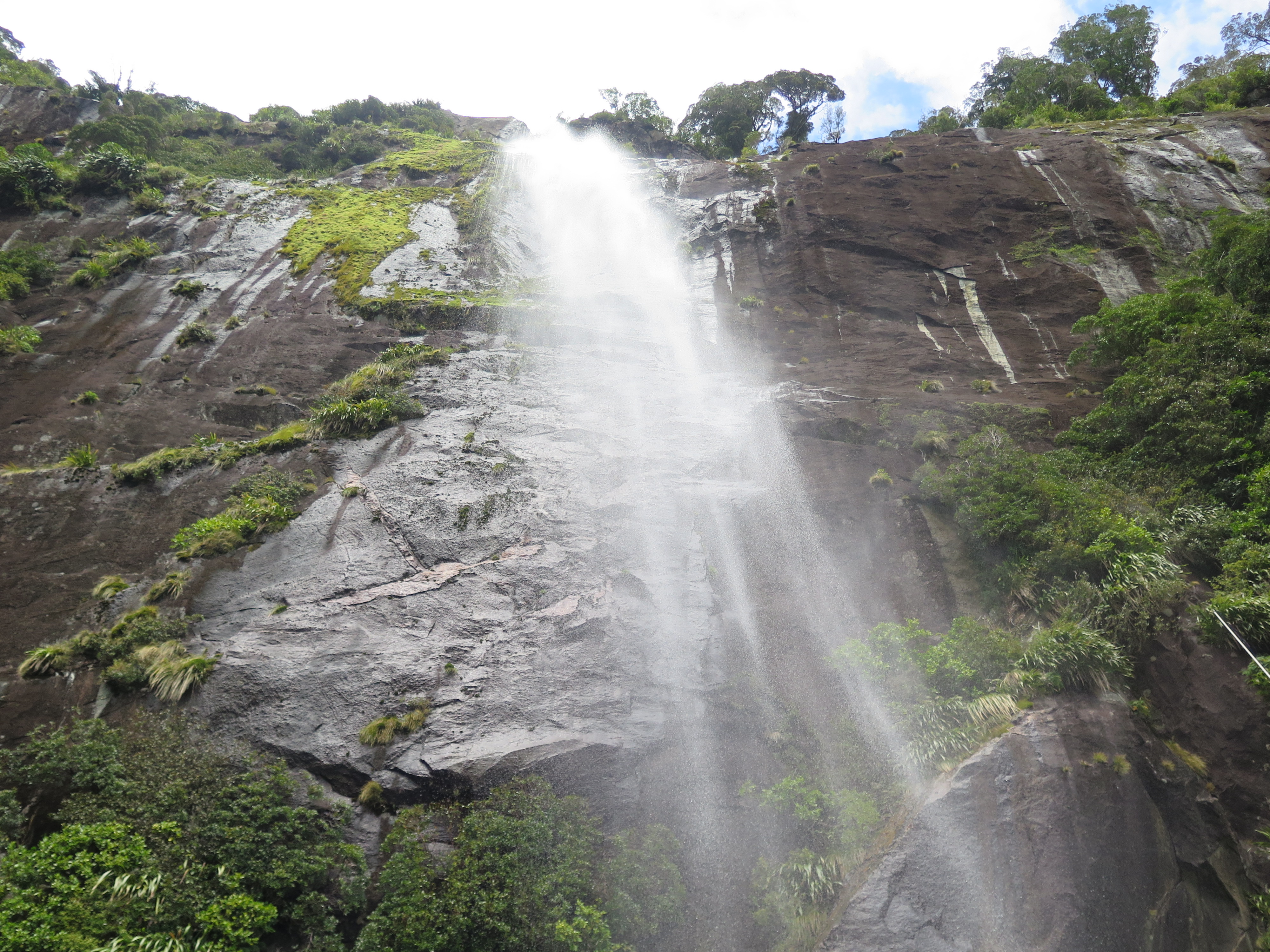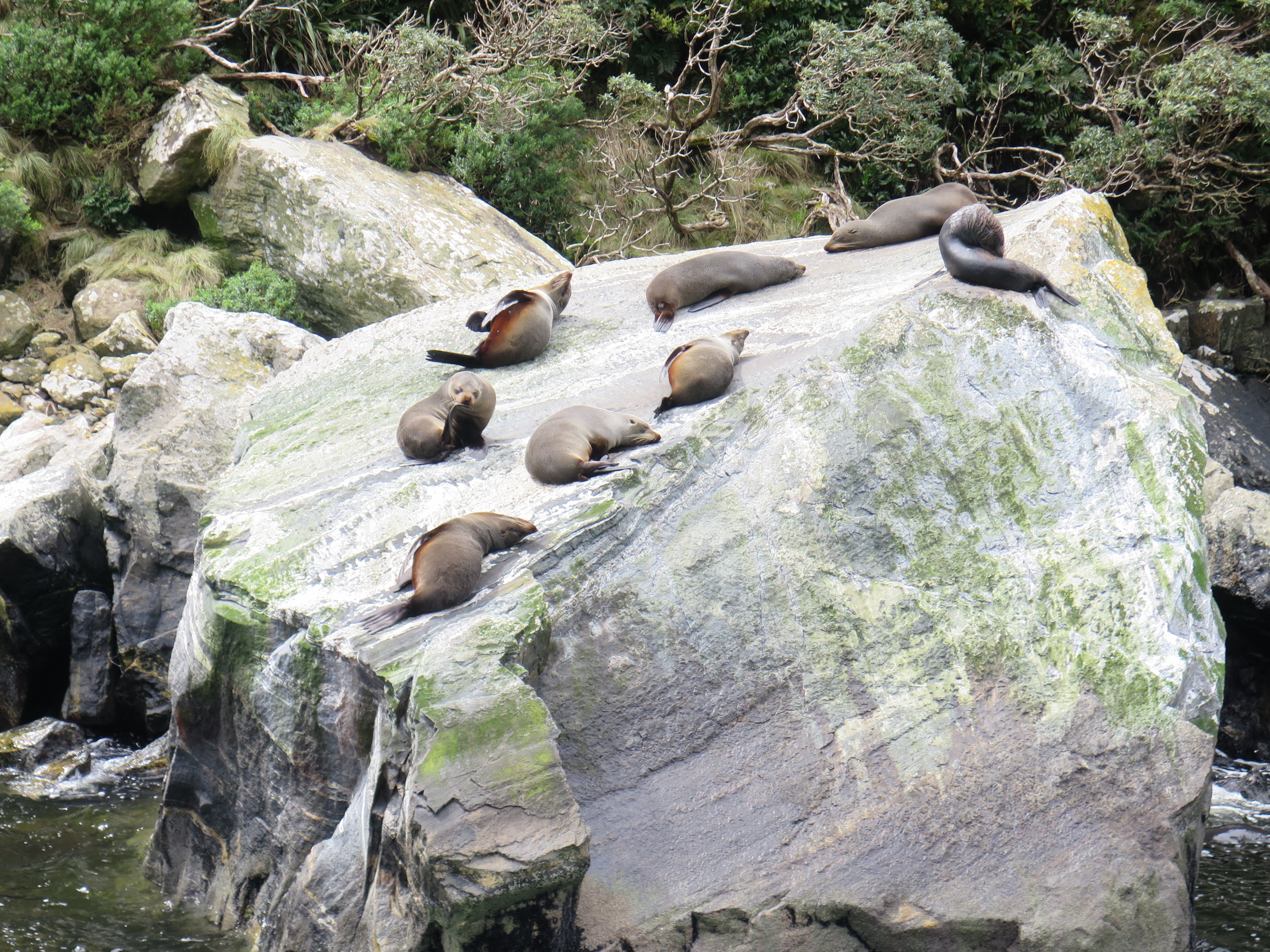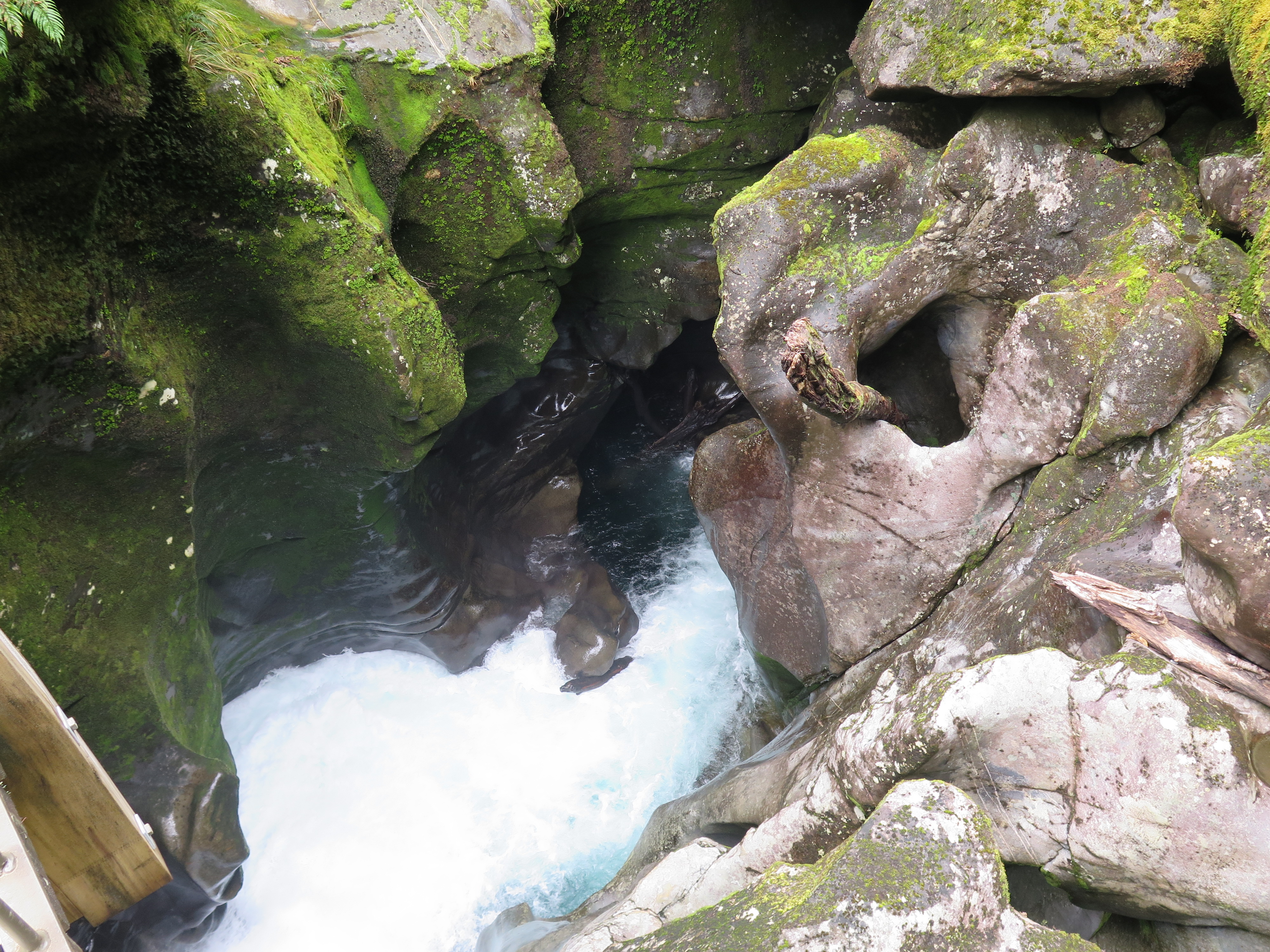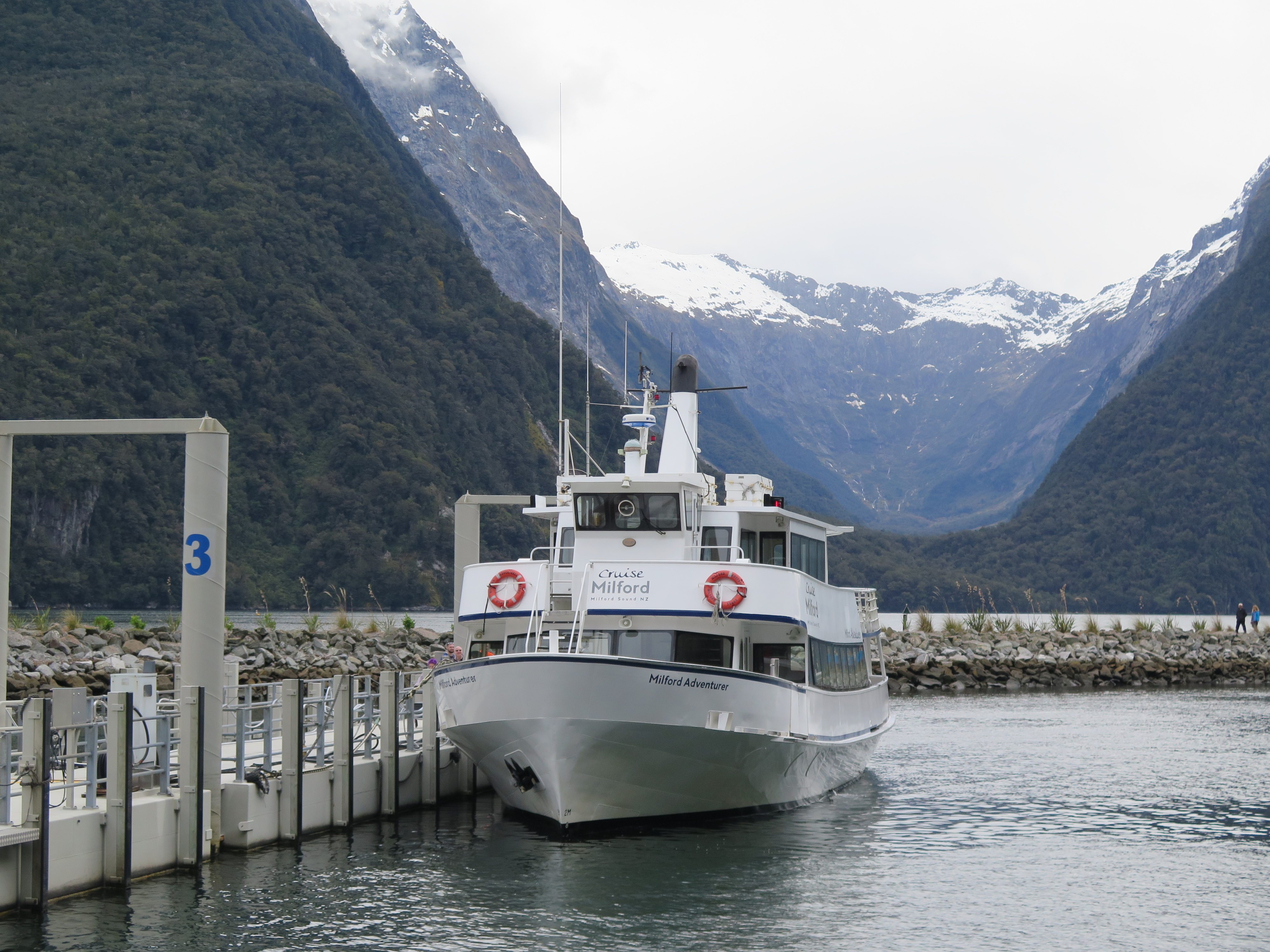The Maori name for Milford Sound is Piopiotahi. This seems a distinct improvement on the original name which was given by Captain John Grono who discovered it in 1812. He named it Milford Haven after his homeland in Wales. This was later changed to Milford Sound by Captain John Lort Stokes who travelled on HMS Beagle, but even this is wrong as it is a fiord! It is a fiord because it was carved by ice and so is a flooded u-shaped glacial valley.
Our trip started being picked up in Te Anau. We booked a tour with an operator who does small groups, so there were just 12 of us on the bus. We stopped frequently on the way. The first few were at various viewpoints, but there wasn’t much of a view as the cloud was down. However, the weather quickly improved and we stopped for a short walk at Marian Falls – a cascade from Lake Marian which is a glacial lake sitting in a hanging valley between the peaks of Mt Christina, Mount Crosscut, and Mt Gunn.

From there we headed to Gunn’s camp. This was originally a camp for thw workers who were building the Te Anau to Milford Sound Road, but then became a centre for guiding walking groups along the Hollyford Track. It is named after a well know cattle farmer called Davey Gunn who used to walk his cattle all the way from there to Invercargill to sell them. We stopped there for tea – home-made date scones.
Next – another waterfall. This one called Falls Creek with the obligatory photo stop. From there we headed up to the Homer Tunnel. The tunnel is 930 metres above sea level and 1.2km long. It is cut straight through a section of the mountain called Homer’s saddle. Both are named after William H. Homer who persuaded the government that this would be the best route to provide access to the Milford area. Work started in 1935 with 5 men with pickaxes. This, not surprisingly proved slow and eventually more resources were put in place, but it was 1953 before the tunnel finally opened. It is unlined granite and almost single lane with access controlled by traffic lights. However, these traffic lights only work in high season as at other times, it would not be safe to have traffic queues because of the avalanche risk.
Once through the tunnel, it is only 20km or so further to Milford Sound. we headed more or less straight down to get on our boat. The boat took us around the sound for around 2 hours – nosing under waterfalls (wet and cold, but very spectacular from inside the cabin) and nosing up to rocks with fur seals on them (more spectacular from outside on deck).


On the way back we made a further couple of stops. One was at a point where the Cleddau River (more Welsh names!) was forced through hard diorite rocks, creating a feature called the chasm. The force of the water created some amazing patterns in the rock where flooding had trapped rocks and caused erosion in the main gorge.

